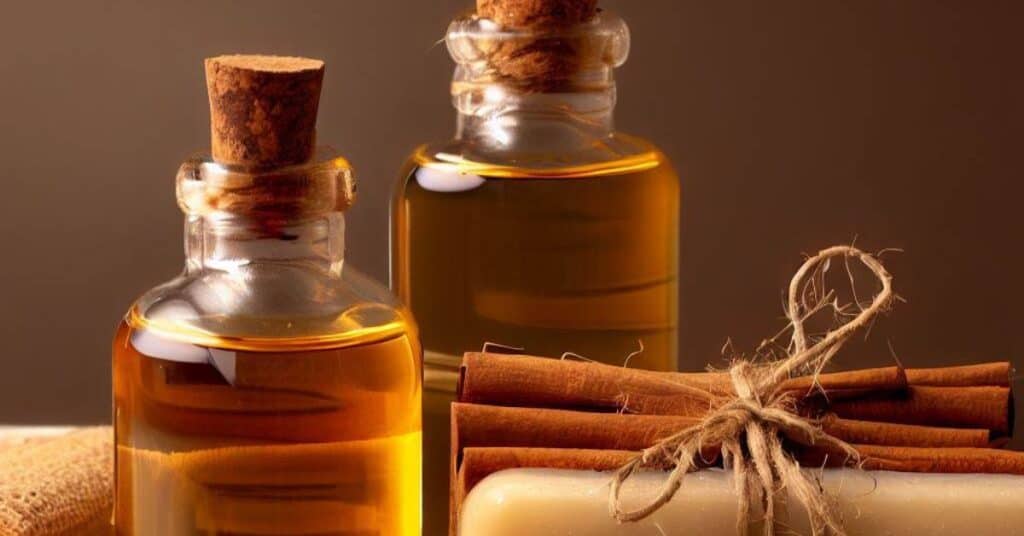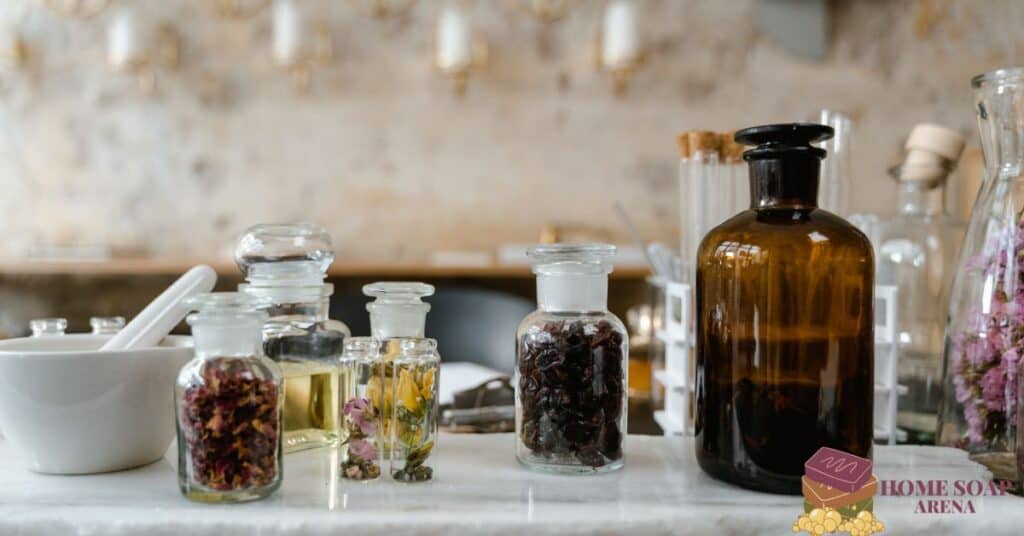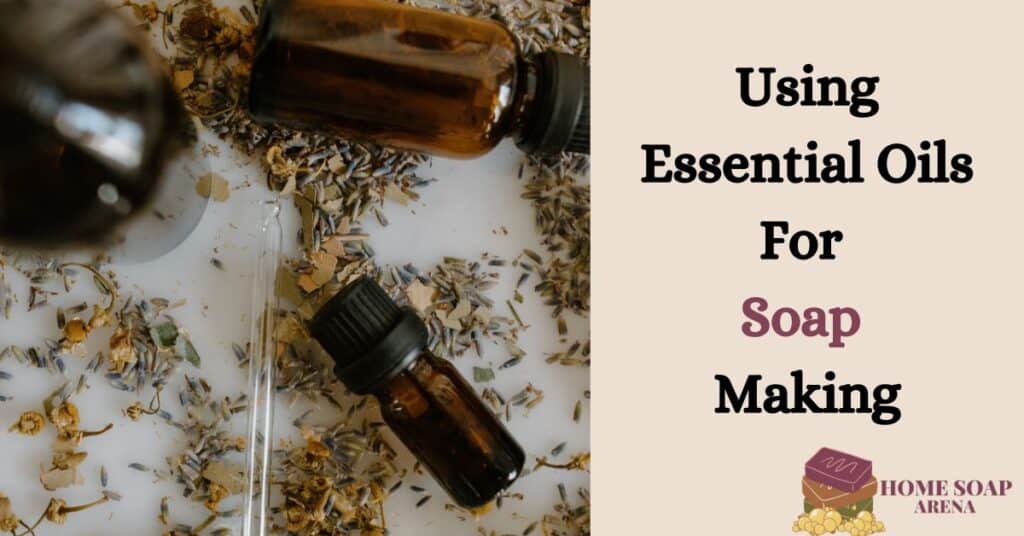Table of Contents
- Benefits Of Using Quick Mix Oils For Soap Making
- What Are The Different Types Of Quick Mix Oils For Soap Making
- What Are The Quick Mix Oils Used For Soap Making Around The World
- What Are The Four Ingredients To Avoid In Soap Making With Quick Mix Oils
- What Is The Essential Quick Mix Oils For Soap Making
- How Do You Combine Multiple Oils For Soap Making
- Final Thought
Do you want to know the quick mix of oils for soap making? I will show you how to mix oils for soap-making quickly.
In my eight years as a beautician, I have seen a lot of mistakes people who mix oils make, and that is why I will be happy to put you through the right path of mix.
I aim to clarify any misconceptions about which oils are ideal for soap production by producing a soap-making oil chart.
Diverse oils have varying fatty acid concentrations, and so impart various qualities to the made soap.
Let’s look at the oils themselves now.
Now, let’s get started.
Benefits Of Using Quick Mix Oils For Soap Making
When manufacturing soap, selecting the appropriate kind of oil to work with may provide several advantages.
There are several kinds of fats, each offering unique benefits, including various levels of wetness, lather, and hardness.
If you use the correct sort of oil in your soap, you may make it more hydrating, which is beneficial for those with dry skin or sensitive skin.
Additionally, it can assist in consolidating your soap, extending its shelf life. Further, it can help your soap bubble up more and create a more excellent lather.
Scan may make a bar of soap that is one-of-a-kind and crafted just for your requirements by utilizing a variety of oils.
For instance, if you want to make a hydrating soap with a creamy lather, you can use a mix of coconut oil, olive oil, and castor oil in the soap-making process.
What Are The Different Types Of Quick Mix Oils For Soap Making
A soap-making oil chart should thus include both the essential and the more exotic oils that are becoming increasingly popular in soap manufacturing.
While there is limited agreement on the optimal oils for soap manufacturing, a few fundamentals are recognized to be helpful.
For example, olive oil, palm oil, and coconut oil are all well-known soap-making oils that produce high-quality soap, especially when combined with other oils.
Experimenting with an online lye calculator will often allow you to forecast the qualities of a final recipe.
One of the oils that are most frequently utilized in the creation of soap is coconut oil.
It is a saturated fat that is highly moisturizing, making it ideal for producing bar soap.
It also has a creamy lather and is perfect for sensitive skin or allergies.
1. Olive oil is another standard soap-making oil.
It is a monounsaturated fat and less harsh than other oils; it has a creamy lather and is highly hydrating. It is ideal for persons with dry or sensitive skin. more on what makes soap lather
2. Palm oil is a standard oil used to produce soap.
It is a saturated fat that is highly hydrating. It has a creamy lather that is quite firm, making it ideal for manufacturing bar soap.
It is vital to purchase palm oil from a company that is a member of the Roundtable on Sustainable Palm Oil, or RSPO.
This group was founded in 2004 in response to growing worries about the effects of palm oil on the environment and society.
The RSPO has production criteria for growers that establish best practices for producing and procuring palm oil, and the majority of the worldwide industry supports it.
3. Sunflower oil is often utilized as an emollient in cosmetic compositions. Oleic acid and linoleic acid, two monounsaturated fatty acids, comprise the bulk of the oil.
It may be used on all skin types, including dry, normal, oily, and acne-prone skin, and most people don’t find it irritating.
4. Castor oil is another versatile oil frequently used in soap production. It’s a monounsaturated fat that’s highly hydrating. It also has a creamy lather and is ideal for dry or sensitive skin.
5. Almond oil is a gentle oil that may be used to make bar soap. It’s a monounsaturated fat that’s highly hydrating. It lathers nicely and is ideal for persons with sensitive skin.
6. Jojoba oil is a light oil that may be used to make liquid soap. It’s a monounsaturated fat that’s highly hydrating. It also has a lovely lather and is suitable for sensitive skin.
7. Avocado oil is a rich oil that may be used to make bar soap. It’s a monounsaturated fat that’s highly hydrating. It has a creamy lather and is ideal for dry or sensitive skin.
What Are The Quick Mix Oils Used For Soap Making Around The World
I was overjoyed with the reaction! I had 86 answers from soap makers in 31 countries around the world.
I truly loved learning about the many sorts of oils individuals may buy in their region and what is less common or too expensive.
Without further ado, the replies are summarized and alphabetized by nation. The points shown by quotation marks are direct quotations.
1. Algeria
· Olive
· Oil of pistachia lentiscu
· Shea butter from Africa, unrefined
“I expected to have trouble finding good quality oil, but it’s lye that’s difficult to come by where I live (in the eastern part)!” People only appear to utilize it for something.
Hence, it’s not sold in stores!
In terms of oil, olive oil is more readily available than any other type (except commercial sunflower oil). However, top-grade olive oil is a little pricey for everyday usage.”
“Local businesses also produce oil from barbary figs (a common plant in Algeria).”
2. The country of Australia
· Palm
· Olive
· Coconut
· Castor
· Avocado
· Apricot seed
· Canola
· Sunflower
“Canola and sunflower oils are low in cost and have excellent soaping properties.”
“I use coconut, olive, and sunflower oils, but I think butcher waste animal fats would be even cheaper.”
“I’m from Sydney.” I make use of coconut, sunflower, and olive oils.
However, asking the local butcher for beef and hog fat scraps is fantastic.
It’s as cheap as chips. Make it yourself at home, and you’re set to go. Otherwise, fat leftovers would wind up in the trash. Wasted.”
3. Bangladesh.
· Mustard
· Palm
· Sunflower
· Soybean
· Canola
· Brazil
· Beef tallow
· Sunflower
· Olive
· Coconut
· Palm
· Red palm oil is commonly accessible (no remark on pricing).
· Extra virgin olive oils are prohibitively costly.
· Beef tallow and sunflower oil are both inexpensive.
· Costly – olive, coconut, and palm
What Are The Four Ingredients To Avoid In Soap Making With Quick Mix Oils
Suppose you’ve decided to eliminate chemicals from your life.
In that case, you’ll quickly realize that many everyday soap products include several ingredients determined to be hazardous or undesirable.
Soap may help you keep fresh and clean, but commercial soaps contain many harmful pollutants you may be unaware of.
Continue reading to learn about the components you should avoid when purchasing soap.
1st. Triclosan
Triclosan is an antibacterial pesticide that is put to soap as a broad antibacterial.
It has been found that using antibacterial items daily helps spread drug tolerance.
We seldom do something so filthy that antibacterial remedies are required to wash it away.
Triclosan is also an endocrine disruptor, causing severe changes in hormonal balance.
Women are especially vulnerable to triclosan since it has a high estrogenic impact and can raise the risk of breast cancer.
2. Dioxane
Dioxane is a synthetic derivative of coconut that many people believe has a natural origin.
Unfortunately, dioxane is a carcinogenic substance that should be avoided since it is especially hazardous to the liver, brain, and kidneys.
3. Diethanolamine (also known as DEA)
DEA is rapidly absorbed via the skin and can be mixed with nitroso diethanolamine (or NDEA), a popular nitrate preservative commonly used in soap.
NDEA is a potential carcinogen related to the development of kidney and liver tumors.
Pregnant women should be especially wary of DEAs since they can disrupt choline absorption, which developing fetuses require for normal brain development.
4. Parabens
Parabens are preservatives often included in various cosmetic goods, including soap.
Because parabens may mimic the estrogen hormone, they have been linked to an increased risk of breast cancer in women.
Through nervous system damage, parabens have also been related to neurological disorders.
What Is The Essential Quick Mix Oils For Soap Making
I’ve compiled a list of the top essential oils you should include in your soap recipes, along with information on the amounts to use, fragrances, and benefits of the oil.
The most regularly used oils are included, as well as some of our personal favorites!
1. Essential Oil of Lavender
Lavender essential oil is a mid-note with an herbal, flowery scent.
It is only for some, so don’t be put off by its outdated reputation. It’s a timeless classic!
· Lavender is known for being able to calm and relax people.
· Lavender essential oil smells good and goes well with many other essential oils.
· Lavender oil should be used at 3% of the entire weight of your soap.
2. Essential Oil of Lemon
Make your soaps smell like summer! Lemon essential oil, fresh and zesty, will offer a refreshing and invigorating smell to your soaps.
We have both traditional and organic lemon essential oils in stock.
The Soil Association certifies us and inspects us annually to ensure we meet their stringent criteria.
In your soap recipe, we recommend using 5% lemon essential oil.
Lemon may be challenging to include in your soap, so consider combining it with a base and middle note essential oil.
3. Essential Oil of May Chang (Litsea Cubea)
Although not widely recognized as a mid/top note, it adds a consistent blast of zesty citrus and summer fragrance to your soaps!
May Chang is a bright, fresh, and zingy aroma that will provide a pleasant and uplifting scent to your soaps.
It’s an excellent soap to have near your kitchen sink to eliminate heavy odors from your hands when cooking, and it leaves a pleasant, lasting smell in the area.
Use up to 1.5% of the weight of your soap recipe.
For a citrus sensory explosion, combine it with lime, lemongrass, and bergamot.
How Do You Combine Multiple Oils For Soap Making
Sometimes, you need to utilize various oils when creating cold-process or hot-process soap.
It is only considered a problem once you reach that stage for the first time.
Combining various oils for soap making – separate containers:
Combining oils for cold or hot process soap production is a technique you will utilize almost every time you manufacture soap.
Knowing the safest and quickest manner is beneficial, especially in advanced soap-producing processes.
I strongly advise you to begin with different containers for numerous oils, then, as you gain confidence, transition to technique two of combining them in one dish.
Take, for example, a recipe that asks for five different oils.
· Extra Virgin Olive Oil
· Oil de coco
· Oil of Sweet Almond
· Chocolate Butter
· Oil of Castor
These five essential oils are very simple to get compared to other oils, such as Jojoba oil.
Let’s also calculate oil quantities like we were manufacturing a specific soap recipe.
The activated charcoal soap given in our soap recipe list will work perfectly.
· 30% Olive Oil 9.90oz
· 13.20oz Coconut Oil – 40%
· 4.95oz Sweet Almond Oil – 15%
· 10% Cocoa Butter 3.30oz
· 1.64oz Castor Oil – 5%
Final Thought
Now that we have established the quick mix of oils for soap making know that Your soap’s characteristics will vary based on the oils you choose.
You may personalize your soap’s form, texture, color, and aroma by making it yourself.
Because they are organic, these oils improve the efficiency of the soap and are completely safe.
Now that you understand how to modify the oils in this recipe to thicken, add foam, and strengthen soaps, it’s time to experiment with alternative soap-making oils.



